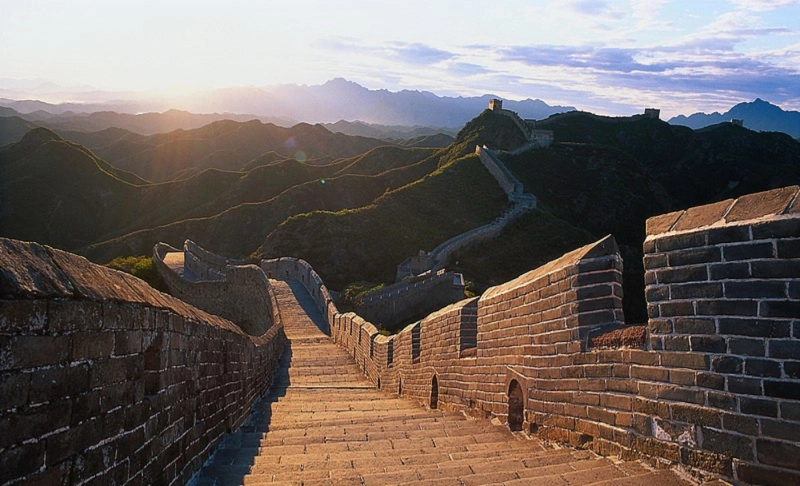By: Christian Haag
February 16 2023

No, the Great Wall of China was built by the Chinese to protect from nomadic invaders, not from the Chinese.
Context
Claims made on TikTok that the Great Wall of China was not built by the Chinese but by the fictional Tartarian Empire have gone viral. The claimants base their claim on old maps and photos. The maps show how the wall surrounds China.
Combined with photos, the video shows how the steep side of the walls and the watchtowers face into China, indicating that the wall was not built to protect China but to protect others from China and that the true history of its construction is being covered up.
Several videos have been published on this topic within the Tartaria conspiracy, which claims that an empire called Tartaria encompassed central and northern Asia with advanced technology and free energy. The videos regarding the Great Wall have reached millions of views and several hundred thousand likes. However, the claims are false.
In Fact
Three maps are used in the video claiming to be old maps of the Tartarian Empire. The first is a map published in Le Carte De Asie in 1754 by cartographer Jean Palairet. The second map is by Abraham Ortelius from 1603, and the third was made by Jodocus Hondius and published in 1623.
While all of these old maps of Asia explicitly depict the historical area of Tartaria, it does not prove the existence of a Tartarian empire as claimed by the Tartaria conspiracy theory. Tartaria, or Tartary, is the historical name given by Europeans to the lands of eastern Europe and Central and Inner Asia, believed to be controlled by the Tartars.
"Tartar" became an umbrella term used by Europeans to describe several different groups, including the Mongols during the Mongol invasions of the 13th and 14th centuries, as well as other nomadic tribes and sedentary populations in the region. The Mongols were known for their destructive conquests, and the term Tartars drew on connotations from Tartarus, the Latin word for Hades, the equivalent of Hell in Greek mythology. They became synonymous with the Antichrist, Gog and Magog, and a force sent to punish the Christian world. The term is a toponym, a geographical term, not equal to an entity such as an empire. To provide a historical example, the third edition of the 1771 Encyclopedia Britannica describes "Tartary" as a geographical region and the inhabitants therein, not an empire. No historical evidence exists of a Tartarian empire, and the maps are of the northern and central parts of Asia drawn from a European perspective.
The narrator of the viral TikTok video also states that the steep sides of the wall and the watchtowers face China, indicating it was built to protect from the Chinese and not the opposite. Promotional pictures of the wall are used as evidence, but the narrator does not state the location or orientation of the photograph. None of the pictures includes both sides of the walls either. The part of the wall "facing into China" can thus be argued to be either side of the wall. Therefore it does not prove that the steep side of the wall and the watchtowers are facing China.
The construction of the first defensive structures that would later become the Great Wall of China began in the seventh century BCE by the Chu State. In the third century BCE, during the Qin Dynasty, several sections of the defensive walls were connected into a single defensive system. Construction of the wall was continuous until the Ming Dynasty, which ruled from 1368-1644 CE. The fortification was built to protect against nomadic tribes north of China, such as the Xiongnu, the Kitans, and later the Mongols. As such, the Chinese built the fortifications for around 2,300 years, not the Tartarians.
Verdict
Considering the historical evidence of the construction of the Great Wall of China and that no records exist of a Tartarian empire, we have marked this claim as false.